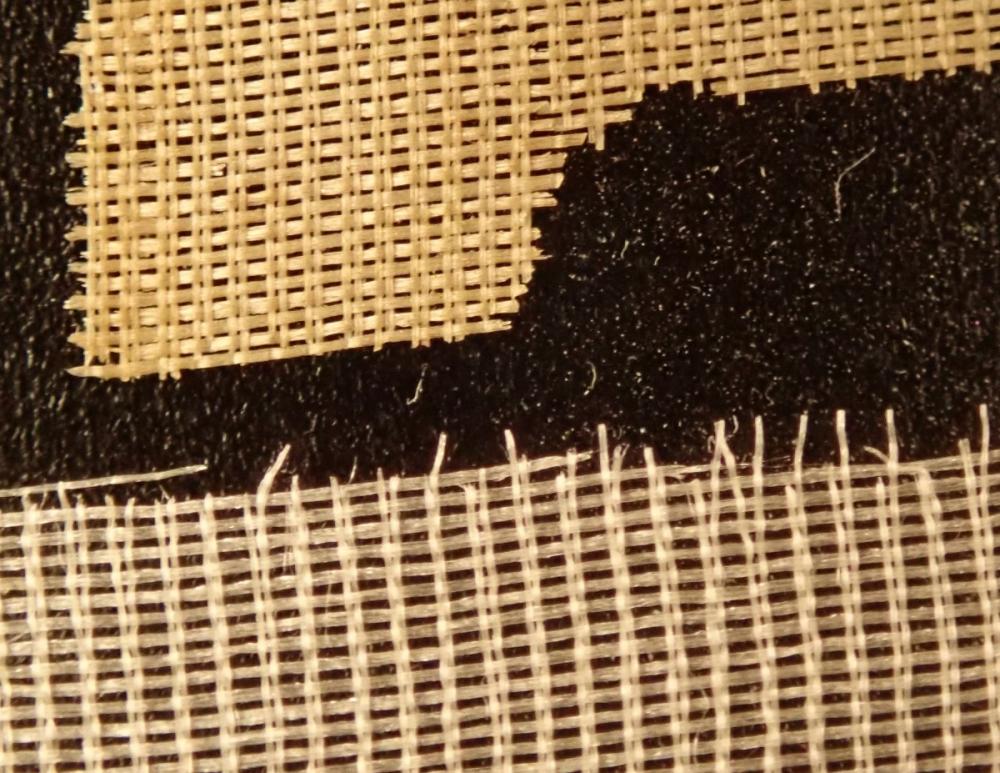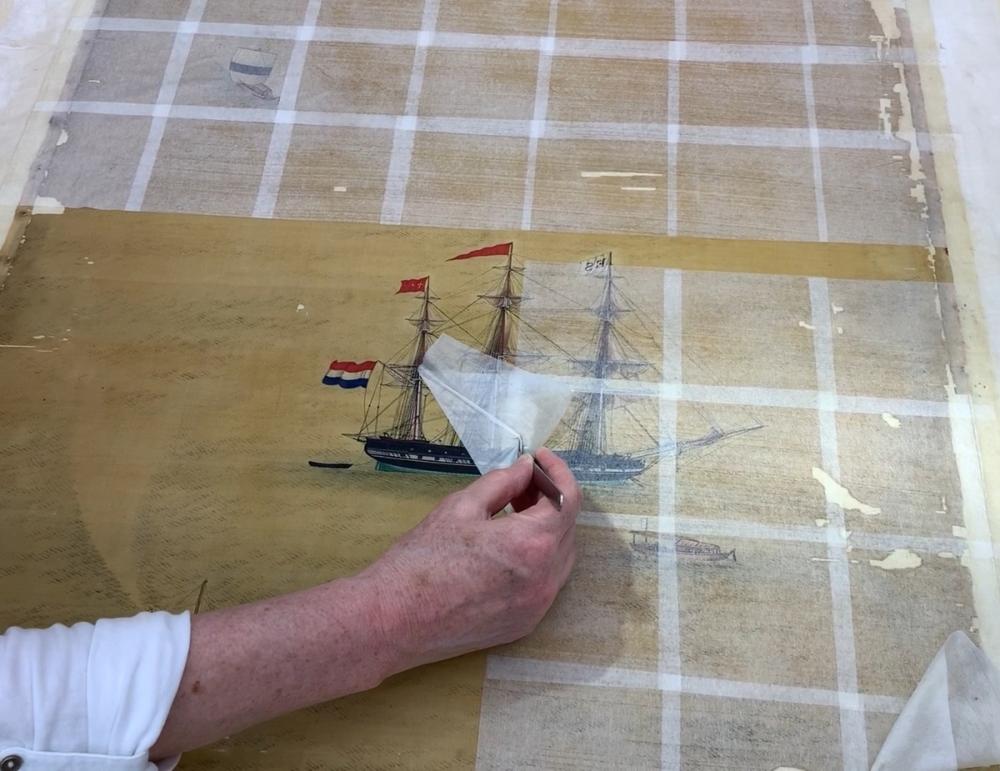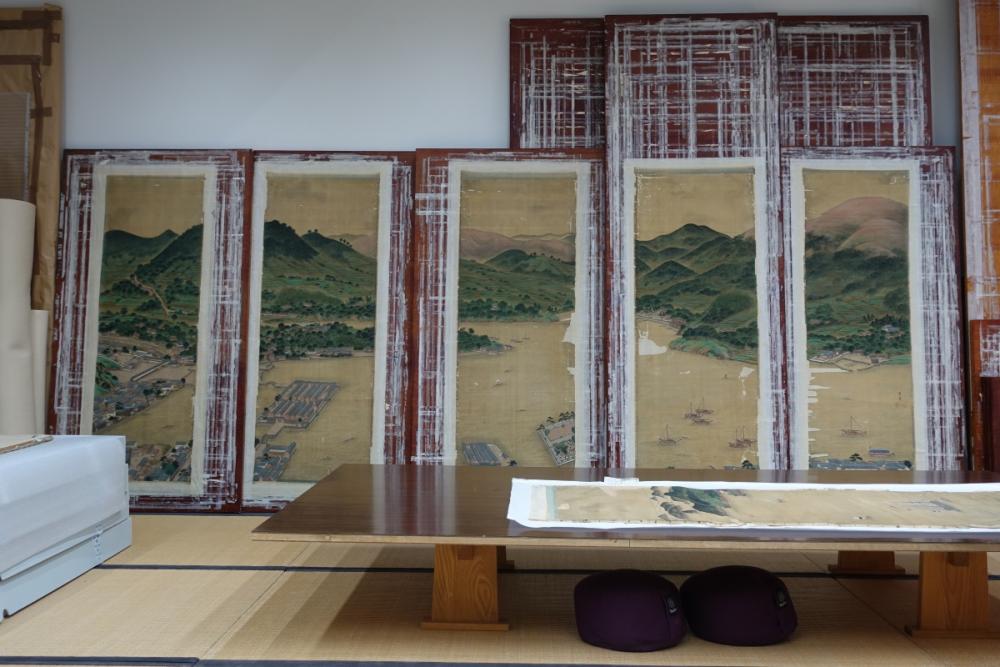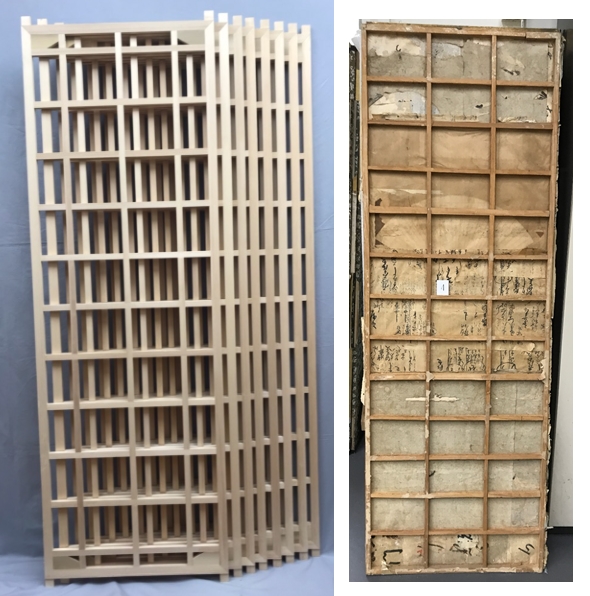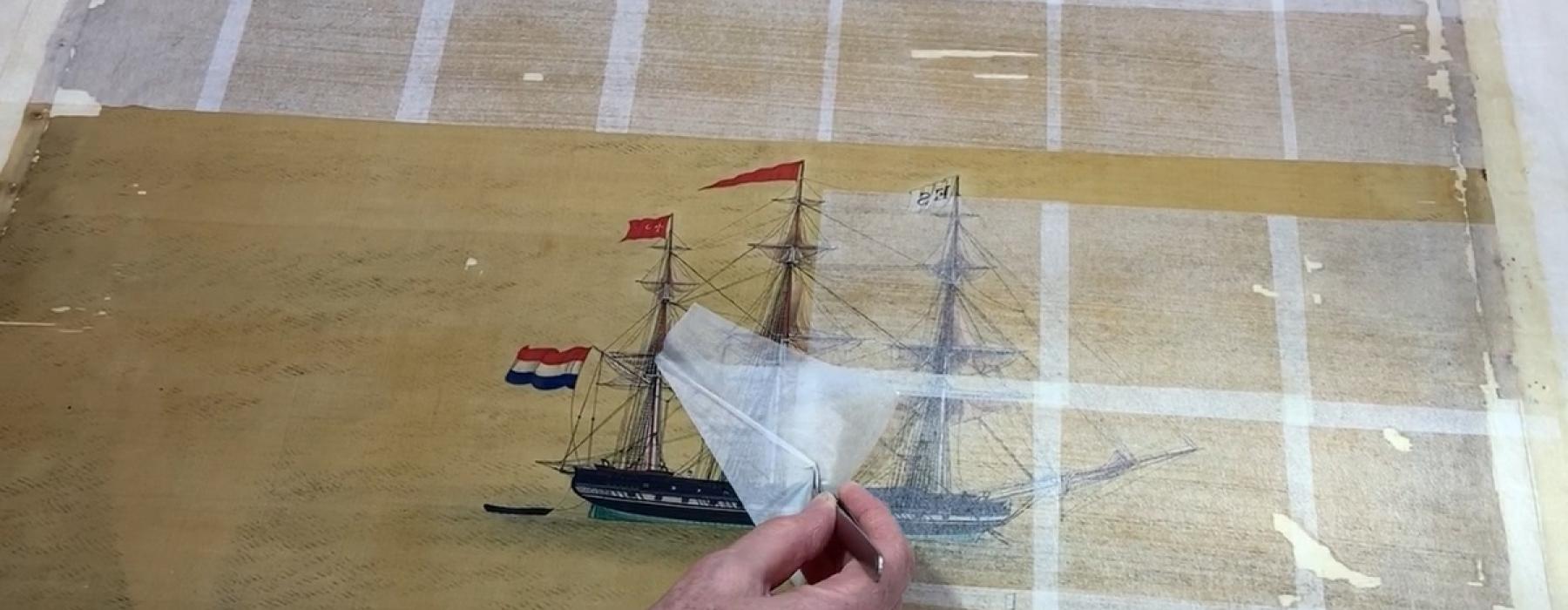
The original silk of the painting has been damaged and substantial sections have been lost over the years. The holes will be filled in with a repair silk. In order for those repairs not to stand out too much after completion of the restoration, a similar weave of painting silk has been sourced through Naoharu USAMI of Shūtokudō, Kyoto.
This silk has a very similar weave with pairs of two narrow longitudinal threads (the warp) and a wider transverse thread that crosses these (the weft). The similarity is needed to ensure the refraction of light does not differ from that of the rest of the screen. It is a very rare section of silk woven by one of the last companies to produce these types of painting silk. That company no longer exists. Furthermore, the silk was also irradiated in order to artificially age the silk, which purposely makes it dry and brittle like old silk. That procedure used to be done at the nuclear power plant of Fukushima, but since the tsunami and meltdown of 2011, this is also no longer carried out. This swatch of silk may be the last of its kind available.
